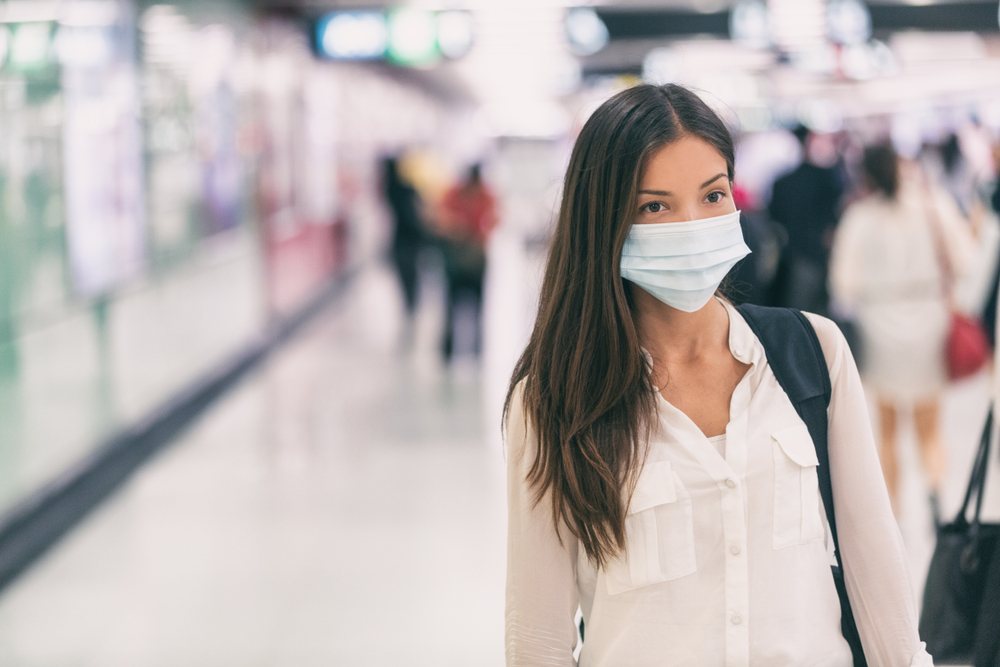Published December 19, 2021 in healthline.com
By by Julia Ries
- The Omicron variant currently accounts for 3 percent of coronavirus infections in the United States, which is up from 0.4 percent last week. The other 97 percent are caused by the Delta variant.
- Omicron has taken off in New York and New Jersey, where it now accounts for approximately 13 percent of cases.
- In New York City, for example, the test positivity rate has been doubling every 3 days.
The Centers for Disease Control and Prevention (CDC) announced Dec. 14 that the Omicron variant of the coronavirus is spreading so rapidly that it may trigger a massive wave of infections that peaks in January.
Omicron currently accounts for 3 percent of coronavirus infections in the United States, which is up from 0.4 percent last week. The other 97 percent are caused by the Delta variant.
Thirty-three states have reported Omicron cases so far, and cases in the United States have grown by 50 percent in the past 2 weeks.
Omicron has taken off in New York and New Jersey, where it now accounts for approximately 13 percent of cases.
In New York City, for example, the test positivity rate has been doubling every 3 days.
“Cases of people infected with the Omicron variant are doubling every 2 to 4 days. This means that Omicron might become the dominant variant in the United States within the next week or two,” Dr. Scott Roberts, a Yale Medicine infectious disease specialist and assistant professor at Yale School of Medicine, told Healthline.
Just how contagious is Omicron?
Growing evidence suggests that Omicron is significantly more contagious than Delta, likely due to some of its mutations that make it more transmissible and able to evade a portion of the immune response achieved through vaccination or previous infection.
“The Omicron variant is outpacing the Delta variant in many regions around the world and is about 2 to 3 times more contagious than the Delta variant,” Roberts said.
Recent findings from Hong Kong suggest that Omicron infects the body’s cells and multiplies about 70 times faster than Delta, which may be why the new variant is so contagious.
Evidence also suggests Omicron has a three- to eightfold higher risk of reinfection.
“From what we have seen in the U.K., Denmark, Norway, and South Africa, we should be prepared for exponential spread of the Omicron variant here in the U.S.,” said Dr. Robert Glatter, an emergency physician at Lenox Hill Hospital in New York City.
Glatter said the United Kingdom will provide a better idea of how Omicron will spread in the states as both regions have similar vaccination rates.
Currently, Omicron is doubling every 1.5 days in parts of the United Kingdom.
“What happens in the U.K. — especially with what we witnessed with the recent spread of Delta — has typically been a bellwether for modeling of the spread of variants in the U.S.,” Glatter said.
There are predictions that the United States may see 1 million cases per day in January when Omicron becomes the dominant variant, Glatter added.
What to know about the severity of Omicron infections
Epidemiologists believe Omicron has a shorter incubation period than the original variant, around 2 to 3 days.
Omicron is thought to cause milder symptoms, according to early research. The CDC states the most common symptoms reported with Omicron infections are cough, fatigue, congestion, and a runny nose.
Data from South Africa shows the death rate among people hospitalized with Omicron infections is two-thirds lower than previous waves.
In addition, hospitalization rates have fallen 91 percent in the Omicron wave in South Africa.
About 1.7 percent of people with COVID-19 were admitted to the hospital in South Africa’s fourth wave, whereas 19 percent were admitted during the Delta wave.
Still, even an extremely contagious but milder version of the coronavirus can have serious consequences.
“Even if the Omicron variant causes milder illness, in the setting of a massive wave of infections that impacts a large number of people, the healthcare system can still be overwhelmed and all medical care, including non-COVID care, can be impacted,” Roberts said.
Hospitalization and death counts typically lag, so we will have a clearer picture of Omicron’s impact in the coming weeks.
People who are immunocompromised have an increased risk of reinfections and breakthrough infections.
“This will add to the growing infections, which will result in more severe disease, hospitalizations, and deaths,” Glatter said.
The best way to avoid severe outcomes: Get vaccinated
It’s unclear whether Omicron causes milder infection due to preexisting immunity or if the variant is inherently less virulent.
A study from Hong Kong found that Omicron replicated in the bronchus, not the lungs, which may be one reason why the variant causes less severe disease.
Many infectious disease doctors suspect the Omicron wave is milder due to immunity kicking in.
People who are not vaccinated remain at highest risk, according to Roberts. He recommends everyone take safety precautions to mitigate the risk of infection.
“This includes getting a booster dose if not already done, wearing masks in indoor settings, and taking rapid tests if these are available,” Roberts said.
Evidence suggests two doses of the vaccine continue to provide strong protection against hospitalization and death, and that a third booster dose can increase neutralizing antibody levels and reduce the odds of contracting an infection.
So far, only 28 percent of U.S. adults have received a third dose. Another 40 percent have not been fully vaccinated, creating a recipe for rapid transmission.
“Needless to say, we are in for a challenging winter, not only in the U.S. but globally,” Glatter said.
The bottom line
The CDC announced this week that the Omicron variant is spreading so rapidly, it may trigger a massive wave of infections that peaks in January.
Omicron currently accounts for 3 percent of coronavirus infections in the United States, which is up from 0.4 percent last week.
Omicron cases are doubling so quickly that it may be the dominant variant within a couple of weeks, experts predict. The best way to prevent severe outcomes is to get vaccinated and receive a booster shot if eligible.




